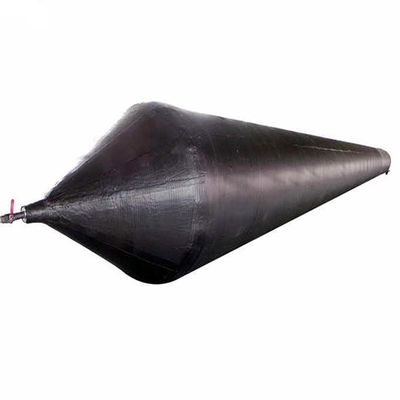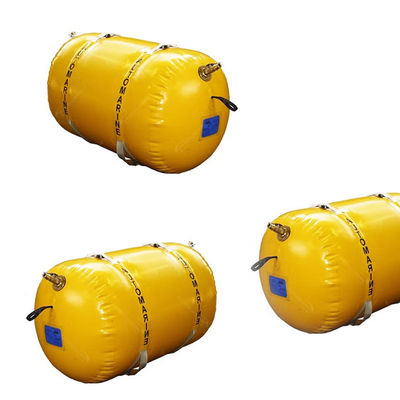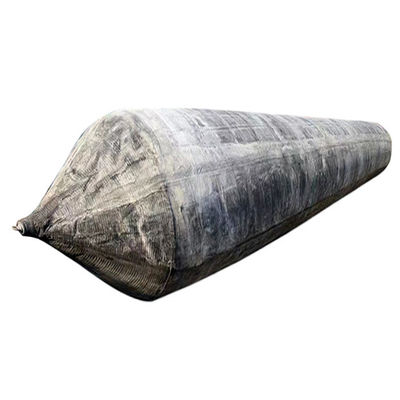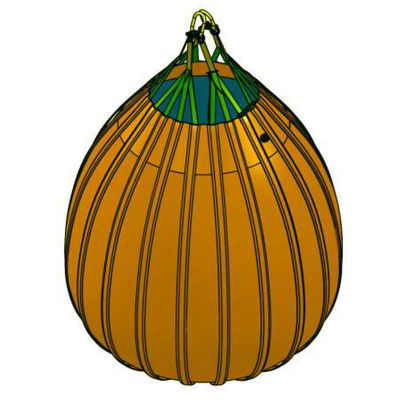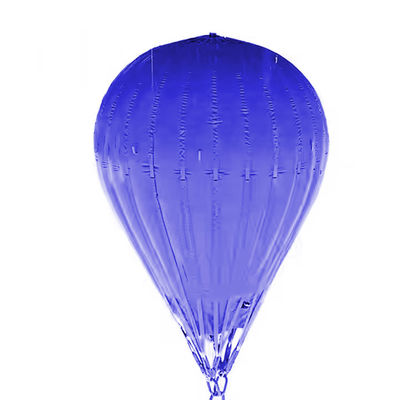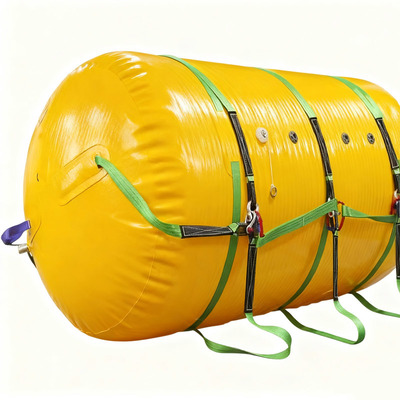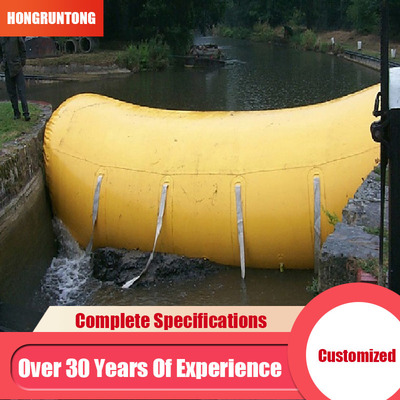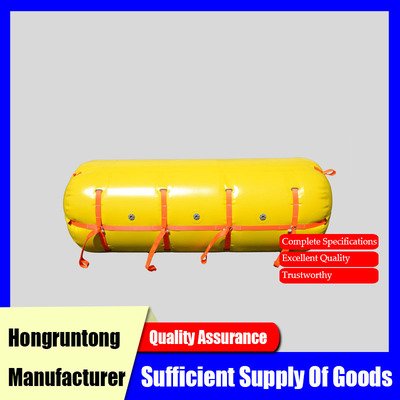Underwater Lift Bags Lightweight Reusable Efficient Design Strong Buoyancy
Product Description
Buoyancy Bags are high-performance inflatable devices designed to provide underwater lifting, floatation, and stabilization for various marine engineering applications. Constructed with reinforced multi-layer rubber and high-tensile synthetic fabrics, they combine strength, durability, and flexibility. The cylindrical shape ensures uniform stress distribution, minimizing material fatigue and prolonging operational lifespan.
The bags are equipped with precision-controlled inflation and deflation valves and reinforced lifting points, providing safe and secure attachment to slings, chains, or cables. Materials are resistant to saltwater corrosion, UV radiation, and mechanical abrasion, allowing extended use in harsh marine environments. Compatible with compressed air or inert gases, Buoyancy Bags are highly adaptable for diverse subsea lifting and stabilization operations.
Case Study: Submerged Construction Module Recovery
In 2024, an offshore oil and gas project experienced a partially submerged modular platform section during routine deployment. The section weighed approximately 8 tons and had to be lifted and repositioned for structural alignment without causing damage to adjacent modules.
The engineering team deployed Buoyancy Bags as the primary lifting mechanism. Six bags, each 2 meters in diameter and 4 meters in length, were strategically positioned under the module and attached using reinforced slings. Sequential inflation using compressed air allowed the module to rise smoothly and maintain a horizontal orientation, minimizing rotation and tilt.
Throughout the operation, continuous monitoring of buoyancy, pressure, and current forces ensured safe handling. After successful lifting and repositioning, post-operation inspection confirmed that the bags maintained structural integrity, with no seam or material damage. The operation highlighted the precision control, adaptability, and durability of Buoyancy Bags in challenging offshore environments.
Specifications
| Product Name |
Buoyancy Bags |
| Raw Material |
PVC coating fabric |
| Type |
Cylindrical |
| Size |
500kg, 1000kg, 5000kg 10000kg,etc |
| Thickness |
0.4-1.2mm, or as request |
| Color |
Yellow, Blue, Black, etc |
| Density |
0.33-0.9g/cm3 |
| Safety Factor |
7:1 |
| Tolerances |
+/- 0.03 on densities +/- 0.2 mm on thickness +/- 0 to +3mm on width +/- 0 to +3mm on length |
Model Specifications
| Model |
Buoyancy [kg] |
Buoyancy [lbs] |
Diameter [mm] |
Length [mm] |
Appr. Weight [kg] |
| HM-ULB01 |
200 |
441 |
500 |
1,000 |
5 |
| HM-ULB02 |
500 |
1,103 |
800 |
1,000 |
8 |
| HM-ULB03 |
1,000 |
2,205 |
1,000 |
1,500 |
11 |
| HM-ULB04 |
2,000 |
4,410 |
1,300 |
1,500 |
20 |
| HM-ULB05 |
4,000 |
8,820 |
1,600 |
2,000 |
50 |
| HM-ULB06 |
6,000 |
13,230 |
2,000 |
2,000 |
66 |
| HM-ULB07 |
8,000 |
17,640 |
2,000 |
2,600 |
75 |
| HM-ULB08 |
10,000 |
22,050 |
2,400 |
2,400 |
80 |
| HM-ULB09 |
15,000 |
33,075 |
2,600 |
3,000 |
110 |
| HM-ULB10 |
20,000 |
44,100 |
3,000 |
3,000 |
130 |
| HM-ULB11 |
30,000 |
66,150 |
3,000 |
4,500 |
170 |
| HM-ULB12 |
50,000 |
110,250 |
4,000 |
4,000 |
220 |
| HM-ULB13 |
70,000 |
154,350 |
4,000 |
5,700 |
310 |
| HM-ULB14 |
100,000 |
220,500 |
4,000 |
8,000 |
450 |
| HM-ULB15 |
150,000 |
330,750 |
5,000 |
8,000 |
660 |
| HM-ULB16 |
200,000 |
441,000 |
5,000 |
10,000 |
900 |
Note: Other sizes can be customized according to the requirements.
Features
Robust Material Construction
The bag shell is manufactured from a high-denier, PVC-coated polyester fabric with exceptional tear and abrasion resistance. This material is impervious to saltwater, hydrocarbons, and UV degradation, ensuring long-term reliability and a service life far exceeding industry standards in harsh marine environments.
Engineered Load Attachment Points
Each bag features integrally welded, reinforced lugs constructed from the same base material. These lugs are designed with high structural redundancy and are stress-tested to withstand dynamic loads well beyond the bag's rated lift capacity, providing a failsafe connection for slings and rigging.
Optimized Valve Fittings System
The system incorporates a dedicated high-flow inlet valve for rapid inflation and a separate, precisely calibrated overpressure relief valve. The relief valve is critical for preventing catastrophic overpressure due to expansion during ascent or temperature changes, automatically venting excess air to maintain safe internal pressure.
Stable Cylindrical Geometry
The cylindrical form factor is not only volumetrically efficient but also provides superior hydrodynamic stability during operations. This shape minimizes rotation and oscillation in currents, ensuring predictable ascent paths and reducing the risk of entanglement with other rigging or the load itself.
Applications
- Marine Salvage Operations: Providing controlled, positive buoyancy for the recovery of sunken vessels, aircraft, and other submerged assets from various depths, enabling precise maneuvering and placement.
- Deployment and Recovery of Subsea Structures: Assisting in the lowering and lifting of heavy subsea equipment such as pipelines, manifolds, and scientific instruments, reducing the load on crane vessels and increasing operational safety.
- Dock and Pontoons Maintenance: Used to lift and hold floating docks, large pontoons, and concrete structures for inspection, repair, or relocation, offering a flexible and powerful alternative to traditional dry-docking.
Why Choose Hongruntong Marine
- Uncompromising Quality Assurance: Every buoyancy bag undergoes a rigorous, multi-stage quality control process. This includes meticulous material inspection, seam strength testing, and a final, mandatory 24-hour air retention and pressure test at 1.5x the maximum working pressure to guarantee zero defects upon delivery.
- Proven Field Performance and Reliability: With thousands of units deployed globally over 15 years, our products have a documented track record of success in critical projects. This extensive operational history validates our designs and builds a foundation of trust with our clients.
- In-House Engineering and Customization Capability: Our dedicated engineering team can modify standard designs or develop fully custom solutions to meet unique project requirements, such as non-standard sizes, specialized fittings, or integration with client-specific systems.
- Global Logistics and On-Time Delivery: We maintain a strategic inventory and have established partnerships with international logistics providers to ensure that our products reach your project site anywhere in the world, on schedule, every time.
FAQ
Q1: How is the lift capacity of a buoyancy bag calculated?
A: The theoretical lift capacity is the weight of the water displaced by the bag minus the weight of the bag itself and the air inside. For seawater, a good approximation is 1.025 tons per cubic meter of air volume. We provide a detailed lift chart that accounts for depth and air compression in our technical datasheets.
Q2: What is the maximum operating depth for your standard bags?
A: Our standard HRT-CS Series is rated for depths of up to 60 meters. For deeper applications, we offer our HRT-HD High-Depth series, which is engineered with reinforced materials and construction to withstand higher ambient pressures.
Q3: How do I determine the correct number of bags for my lift?
A: The total required lift capacity should be at least 1.25 to 1.5 times the submerged weight of the object. This safety factor accounts for potential uneven loading, dynamic forces, and provides a reserve capacity. Our engineering team can provide a free lift calculation service for your specific project.
Q4: What maintenance is required for the buoyancy bags?
A: After use, rinse with fresh water to remove salt and debris. Inspect for cuts, abrasions, or damage to fittings. Store deflated in a cool, dry, and UV-protected area. An annual pressure test is recommended for bags used in critical operations.
Q5: Can the bags be repaired if punctured?
A: Yes, minor punctures and tears can be effectively repaired in the field using our proprietary repair kits, which include high-strength, waterproof patching material and adhesive. Major damage should be assessed by our service team.
Product Images

 メッセージは20〜3,000文字にする必要があります。
メッセージは20〜3,000文字にする必要があります。 メールを確認してください!
メールを確認してください!  メッセージは20〜3,000文字にする必要があります。
メッセージは20〜3,000文字にする必要があります。 メールを確認してください!
メールを確認してください! 
